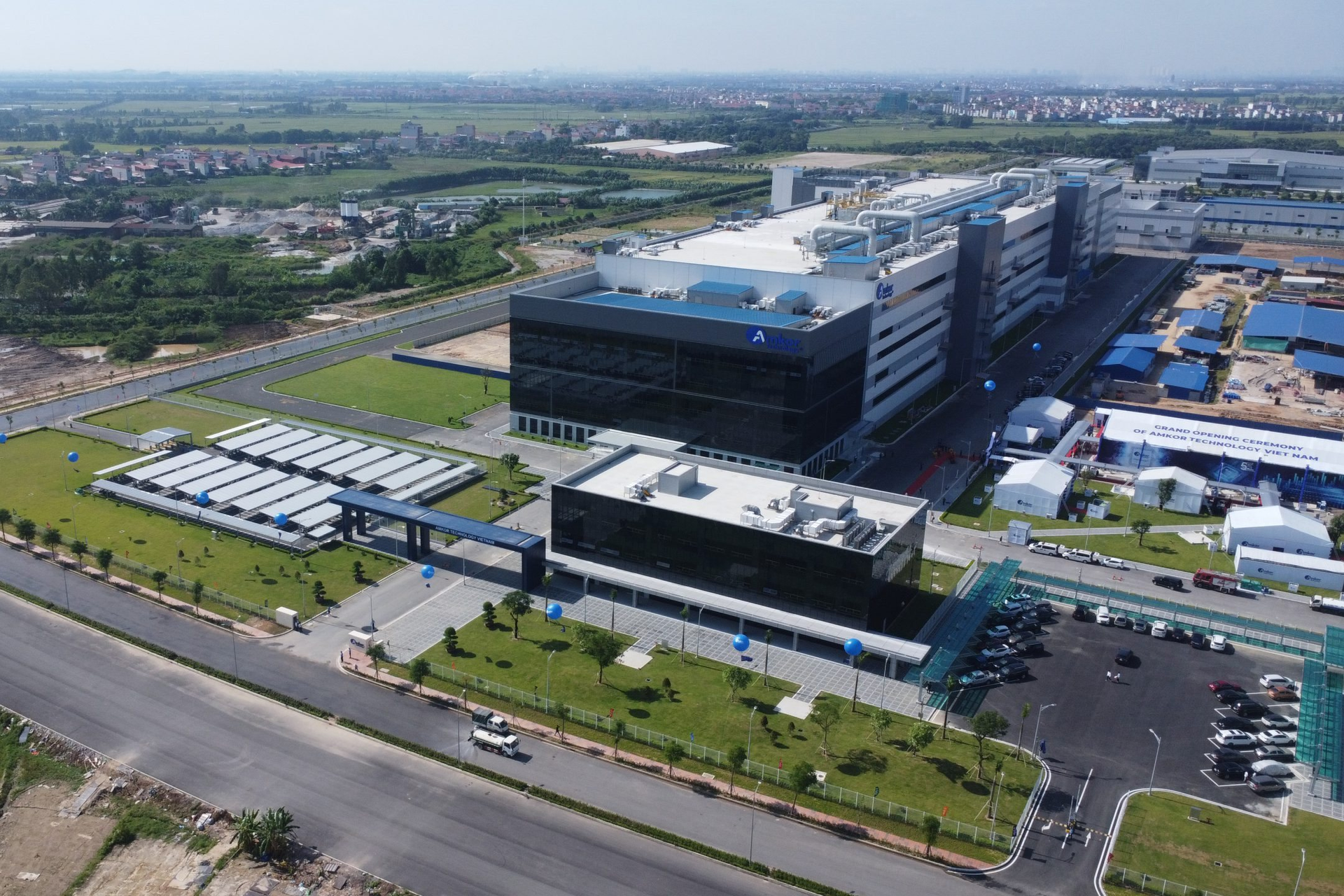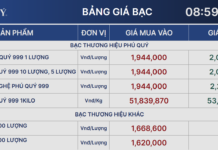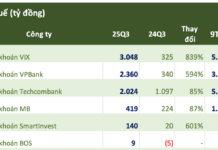
Vietnam’s Ministry of Planning and Investment (MPI) believes that the country has a “once-in-a-thousand-years” opportunity to enter the global semiconductor industry value chain. During the recent high-level engagements between the Vietnamese Prime Minister and US partners, the US side emphasized that to seize and realize this opportunity, Vietnam needs to act quickly within a timeframe not exceeding 24 months.
Recently, the Prime Minister signed Decision No. 1018/QD-TTg dated September 21, 2024, issuing the Strategy for the Development of Vietnam’s Semiconductor Industry until 2030, with a vision towards 2050.
The Strategy sets out a path for the development of Vietnam’s semiconductor industry from now until 2030 and a vision for 2050, following this formula:
C = SET + 1
Where:
C: C hip (Semiconductor chip)
S: S pecialized (Specialized, Application-specific chip)
E: E lectronics (Electronics industry)
T: T alent (Talent, Human resources)
+ 1 : Vietnam (Vietnam is the new safe destination for the global semiconductor supply chain)
Developing the semiconductor industry towards 2050 with a 3-phase roadmap
Vietnam aims to develop the semiconductor industry towards 2050 with a 3-phase roadmap:
Phase 1 (2024 – 2030): Leverage geopolitical advantages and existing human resources in the semiconductor industry. Attract selective FDI to become one of the global centers for semiconductor talent, and develop basic capabilities in all stages of the semiconductor industry, from research, design, manufacturing, packaging to testing.
Phase 2 (2030 – 2040): Become one of the global centers for the semiconductor and electronics industries. Develop the semiconductor and electronics industries by combining self-reliance and FDI.
Phase 3 (2040 – 2050): Become a leading country in the world in the semiconductor and electronics industries. Achieve mastery in research and development in the fields of semiconductors and electronics.
By 2040, Vietnam’s semiconductor industry workforce will exceed 100,000 engineers and bachelor’s degree holders
The 3-phase roadmap for developing Vietnam’s semiconductor industry includes the following specific objectives:
1. Phase 1 (2024 – 2030):
a) Attract selective FDI, establish at least 100 design companies, 1 small-scale chip fabrication plant, and 10 packaging and testing facilities. Develop specialized semiconductor products in certain sectors.
b) Achieve an annual revenue of over $25 billion in the semiconductor industry, with a value-added rate of 10-15% in Vietnam. Achieve an annual revenue of over $225 billion in the electronics industry, with a value-added rate of 10-15% in Vietnam.
c) Have a workforce of more than 50,000 engineers and bachelor’s degree holders in the semiconductor industry, with a suitable structure and quantity to meet development needs.
2. Phase 2 (2030 – 2040):
a) Develop the semiconductor industry by combining self-reliance and FDI, establishing at least 200 design companies, 2 chip fabrication plants, and 15 packaging and testing facilities. Gradually achieve technology self-sufficiency in the design and manufacturing of specialized chips.
b) Achieve an annual revenue of over $50 billion in the semiconductor industry, with a value-added rate of 15-20% in Vietnam. Achieve an annual revenue of over $485 billion in the electronics industry, with a value-added rate of 15-20% in Vietnam.
c) Have a workforce of more than 100,000 engineers and bachelor’s degree holders in the semiconductor industry, with a suitable structure and quantity to meet development needs.
3. Phase 3 (2040 – 2050):
a) Establish at least 300 design companies, 3 chip fabrication plants, and 20 packaging and testing facilities, achieving mastery in research and development in the semiconductor field.
b) Achieve an annual revenue of over $100 billion in the semiconductor industry, with a value-added rate of 20-25% in Vietnam. Achieve an annual revenue of over $1,045 billion in the electronics industry, with a value-added rate of 20-25% in Vietnam.
c) Have a workforce in the semiconductor industry with a suitable structure and quantity to meet development needs.
d) Complete the Vietnamese semiconductor industry ecosystem, with the capability to lead in certain stages and segments of the production chain.
5 key tasks for the development of the semiconductor industry
Based on the above content, the Strategy proposes 5 key tasks with specific solutions:
1. Developing application-specific chips
a) Research and develop core technologies and breakthrough next-generation application-specific chips through investments in core semiconductor research centers, focusing on areas such as AI chips and IoT chips. Implement mechanisms to support shared use of certain laboratory infrastructure and research facilities. Expand research and development, and technology transfer at the national level, research institutes, universities, and enterprises in the semiconductor field.
b) Develop Vietnam’s semiconductor industry ecosystem, connecting it with the ecosystems of strategic partners. Build common platforms and tools to support innovative startups, talent training, and chip design and development. Promote the development and use of application-specific chips in certain sectors: high-tech agriculture, automation, consumer electronics, digital transformation, etc.
c) Establish special investment and financial incentives from the government to build a small-scale, high-tech chip fabrication plant to meet the needs of chip research, design, and manufacturing.
d) Support businesses and research institutions in placing orders for chip manufacturing using the Multi-Project Wafer model to save time and costs. Encourage research projects and startups in the semiconductor field.
2. Developing the electronics industry
a) Focus resources on research and development of electronic equipment, especially next-generation electronic equipment integrated with application-specific chips and AI chips.
b) Implement policies to prioritize the use of state budget for purchasing domestic electronic equipment to promote the development of the domestic electronics market.
c) Support and promote large domestic corporations and enterprises in manufacturing next-generation electronic equipment, aiming to become multinational enterprises and enhance global competitiveness. Provide incentives for digital technology enterprises to expand investment and production of next-generation electronic equipment. Support startup activities in the semiconductor and electronics fields.
d) Develop the auxiliary industry ecosystem, promote technology transfer, and strengthen joint ventures and linkages with foreign enterprises for the production of next-generation civilian and specialized electronic equipment.
d) Support and promote the participation of Vietnamese semiconductor and electronics enterprises in the National Brand Development Program, targeting domestic, regional, and international markets. Facilitate trade and investment promotion in the semiconductor and electronics industries in key markets. Include certain semiconductor and electronics products in the National Product Development Program.
3. Developing human resources and attracting talent in the semiconductor field
a) Develop and implement the Project for Human Resources Development in the Semiconductor Industry until 2030, with a vision towards 2050. Emphasize retraining, advanced training, and transitional training for readily available human resources, including electronic, telecommunications, information technology, and digital technology engineers, along with STEM-capable human resources. Base the training on long-term forecasts and visions, closely following market demands.
b) Provide financial support for training activities, curriculum development, and research at the undergraduate and postgraduate levels. Invest in and procure modern equipment for training institutions and research institutes. Develop data centers and supercomputer systems to serve research, training, and development in the fields of semiconductors, electronics, and new digital technologies such as artificial intelligence and cloud computing.
c) Establish breakthrough mechanisms and policies to attract and nurture top global talent and senior experts in the semiconductor and electronics fields, both domestically and internationally. Connect leading domestic and international experts, especially Vietnamese experts working abroad, to form the Vietnam Innovation Network in the semiconductor field.
d) Cooperate with countries facing a shortage of human resources in the semiconductor field. Promote the signing of commitments between training institutions and domestic and foreign semiconductor and electronics enterprises to ensure successful training outcomes.
4. Attracting investment in the semiconductor field
a) Establish the most favorable mechanisms to selectively attract foreign investment projects with high technology content in the semiconductor and electronics industries, using central and local government budgets. Implement a one-stop-shop mechanism for investment projects in the semiconductor and electronics industries.
b) Study and establish an Investment Support Fund to mitigate the impact of the global minimum tax.
c) Prioritize foreign enterprises in the semiconductor and electronics fields that engage in research and development in Vietnam, use Vietnamese auxiliary industries, and form joint ventures or linkages with Vietnamese enterprises. Create favorable conditions for state-owned enterprises, private enterprises, large enterprises, and small and medium-sized enterprises to form joint ventures with foreign enterprises in the semiconductor and electronics fields.
d) Establish green lane mechanisms and other facilitative mechanisms for auxiliary enterprises and exporters of goods, raw materials, supplies, and components related to the semiconductor industry and next-generation civilian and specialized electronic equipment.
d) Invest in the development of digital infrastructure, electricity infrastructure, and water supply and drainage infrastructure. Apply supportive mechanisms for electricity and water prices to meet the requirements of semiconductor manufacturing plants and next-generation electronic equipment factories in planned areas. Prioritize the development of renewable and green energy to serve the semiconductor and electronics industries.
5. Some other tasks and solutions
a) Establish the National Steering Committee for the Development of the Semiconductor Industry (the Steering Committee), with the Prime Minister as the Chairman. The Steering Committee is an inter-sectoral coordinating organization that assists the Government and the Prime Minister in studying, directing, and coordinating the resolution of important inter-sectoral issues related to promoting the development of the semiconductor industry in Vietnam.
Establish the Semiconductor Professional Advisory Group (the Advisory Group). The Advisory Group is an independent, professional advisory body with a strategic vision, providing in-depth knowledge and analysis to advise the Steering Committee and the Prime Minister on directing and orienting the development of the semiconductor industry in Vietnam.
The Advisory Group is headed by the Minister of Information and Communications. Its members include representatives from associations, enterprises, research and training institutions, and leading experts in the semiconductor field.
b) Develop and apply Vietnamese technical standards and regulations (TCVN/QCVN) to improve the quality of semiconductor and electronics products. Form and recognize organizations for quality assessment, testing, and calibration of semiconductor and electronics products and services.
c) Supplement the item of expenses for research and development, manufacturing, and production of Vietnamese semiconductor products and next-generation civilian and specialized electronic equipment from the National Science and Technology Development Fund and the National Technology Innovation Fund.
d) Promote international cooperation to mobilize resources for the development of Vietnam’s semiconductor and electronics industries. Enhance the role of Vietnamese representative agencies abroad in promoting international cooperation in the semiconductor and electronics fields.
“Neighborly ‘Competitive Advantage’: Vietnam’s Path to Becoming the Region’s Semiconductor Powerhouse”
The country boasts a 6% global market share in semiconductor exports, a testament to its thriving tech industry.








































